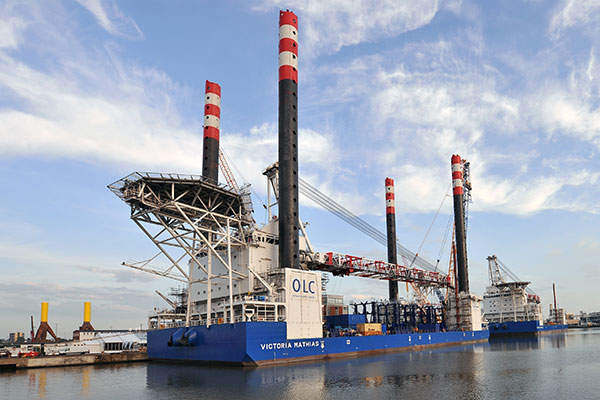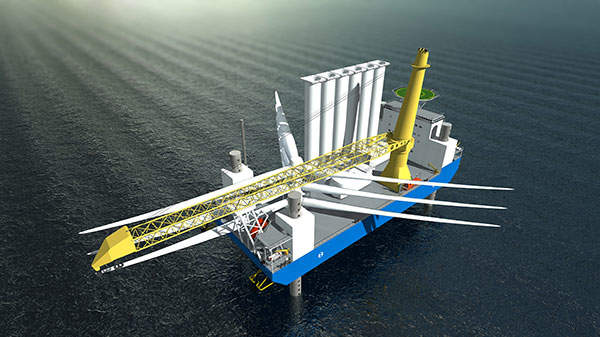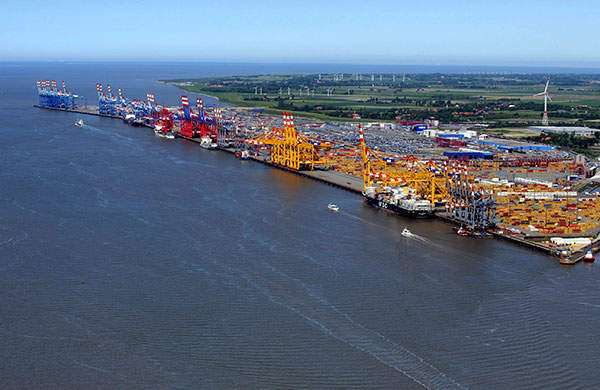Nordsee Ost offshore wind farm is a 295MW renewable power project built approximately 19 miles north-east of Helgoland, a German archipelago found in the North Sea. Construction on the project began in summer 2012 and the wind farm was officially inaugurated in May 2015.
Turbine installation was finished in December 2014 and electricity from the first of 48 turbines was fed into the grid in the same month.
The wind farm will generate about 1.1TW-hours of climate-friendly electricity a year, which is enough to power 320,000 households. It is estimated to offset approximately 850,000t of carbon dioxide emissions a year, compared with a modern gas-fired power plant.
The project is owned and operated by RWE Innogy. The company invested approximately $1.13bn in the development and construction of the wind farm. It is the company’s maiden offshore wind farm in Germany.
The EU sanctioned a loan of approximately $63m for the project, through the European Energy Programme for Recovery (EEPR).
The Victoria Mathias offshore installation vessel was used to install the wind turbines. The ship was deployed at the construction site in late June 2012.
Origins of the German wind farm development
Plans for the construction and operation of the wind farm were originally developed by Winkra Offshore Nordsee Planungs-und Betriebsgesellschaft in 2000. Two years later, the project was acquired by Essent, the largest Dutch energy company.
In October 2009, Essent itself was acquired by the German electric utility company RWE. Nordsee-Ost was consequently transferred to RWE’s renewable energy subsidiary, RWE Innogy.
The project was approved in 2004 by the Federal Office for Shipping and Hydrography. In 2005, a metering mast was installed at Amrumbank to monitor the behaviour of the wind, wave and current. The recorded data is used as the basis for the development and operation of the Nordsee-Ost wind power station.
One year later, a five-megawatt Senvion turbine was commissioned at Cuxhaven for testing the performance, durability and reliability of the turbine. In 2007, the project was given the necessary approvals required for the installation of offshore cables.
Details of the Nordsee Ost offshore energy project
The site of the Nordsee Ost wind farm is located well outside the main shipping routes, military training areas and marine bird conservation zones. The power station is designed for an operational life of 20 years.
A total of 48 Senvion 6M type wind turbines were installed across an area of approximately ten square miles. These turbines are secured on 100m-high towers. Each turbine has a rotor diameter of 126m and rated capacity of 6.15MW. The rotor blades are made of glass-fibre-reinforced plastics (GRP) and measure 61.5m in length.
The turbine towers are fitted on four-legged jacket foundations which stand in water depths averaging 25m. Exagrout Masterflow 950, a cement-based grout developed by BASF, was used to fasten the foundations to the seabed.
Each foundation weighs approximately 550t and measures 50m in length. The foundation base has an area of approximately 400m².
Wind turbine connections and offshore substation
All the wind turbines are connected to one another via inter-array cables, which are connected to an offshore substation.
The offshore substation was built to convert the 33kV electricity produced by the wind turbines to a transmission voltage of 155kV. The stepped-up power is transmitted to the grid connection point at Brunsbüttel using high-voltage subsea cables.
Suppliers for RWE Innogy’s German wind farm
Senvion (formerly REpower Systems) was awarded a contract in February 2010 to supply 48 offshore wind turbines of the 6M type for the Nordsee-Ost project. In May 2010, RWE Innogy signed a two-year lease contract with Eurogate Container Terminal Bremerhaven for the use of Bremerhaven container port as a base port for the development activities of the wind farm.
Aker Solutions was awarded an engineering, procurement and construction (EPC) contract worth approximately $144.6m for the delivery of 48 steel jackets and piles for the wind farm. ABB supplied roughly 40 miles of offshore sea cables. This supply deal was valued at $12.5m.
Siemens Energy was responsible for the construction, supply and installation of the offshore substation. Valued at approximately $724m, the contract was signed in August 2010. Foundation grouting was undertaken by FoundOcean.
TÜV Rheinland was commissioned in April 2011 to inspect and supervise the production of the wind turbines.
VBMS, a company based in the Netherlands, was contracted for the installation of 52 infield cables for the project.




